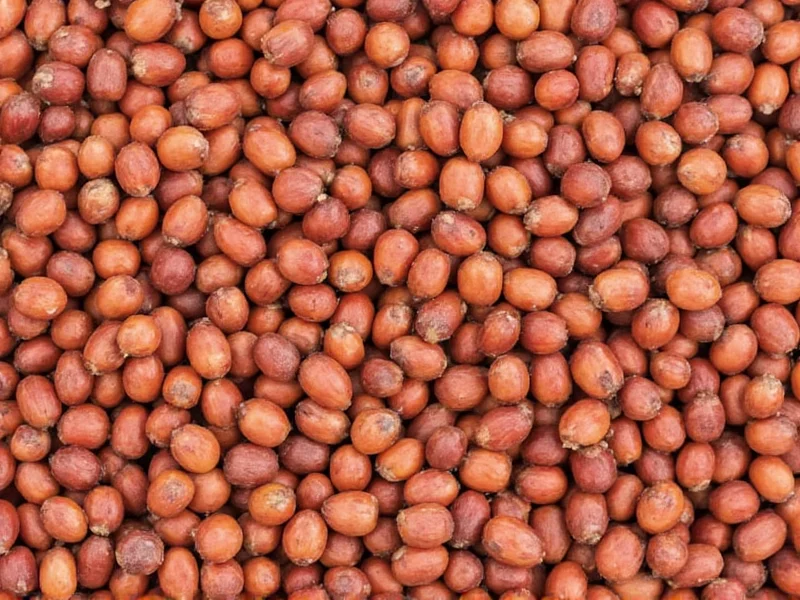Lentils represent one of the earliest domesticated crops, with archaeological evidence dating back to 8000 BCE in Turkey. Despite the common reference to them as "lentil beans," they're botanically distinct from true beans. This distinction matters for both culinary applications and nutritional profiles, making understanding what are lentil beans essential for anyone exploring plant-based proteins.
Understanding Lentils: Beyond the Name
The term "lentil beans" creates confusion because lentils aren't beans at all. Lentils belong to the Lens genus, while beans fall under Phaseolus and other genera. Both are legumes, but they differ significantly in shape, cooking properties, and nutritional composition. This clarification addresses the common search query about what are lentil beans versus true beans.
True lentils have a distinctive lens-shaped, biconvex seed - which is how they got their name from the Latin word "lenticula" meaning "lens." They typically range from 2-9mm in diameter and come in various colors that indicate different varieties and cooking characteristics.
Major Types of Lentils
Understanding the different varieties helps answer the question what are lentil beans in practical terms. Each type has unique properties that affect cooking time, texture, and culinary applications:
| Type of Lentil | Color | Cooking Time | Best Uses |
|---|---|---|---|
| Brown/Green Lentils | Olive green to brown | 20-30 minutes | Soups, stews, salads (hold shape well) |
| French Green (Puy) | Dark blue-green | 25-30 minutes | Salads, side dishes (peppery flavor) |
| Red/Yellow Lentils | Orange to yellow | 15-20 minutes | Dals, purees, thickening soups (mash easily) |
| Black (Beluga) | Jet black | 25-30 minutes | Caviar substitute, salads, pilafs |
Nutritional Powerhouse: What Makes Lentils Special
When exploring what are lentil beans nutritionally, their impressive profile stands out. A single cup (198g) of cooked lentils provides:
- Protein: 18 grams - making them an excellent plant-based protein source
- Fiber: 15.6 grams - supporting digestive health and satiety
- Iron: 6.6 mg - crucial for oxygen transport in blood
- Folate: 358 mcg - essential for cell function and tissue growth
- Manganese: 1.3 mg - important for bone health and metabolism
- Low fat content with virtually no saturated fat
Unlike many other legumes, lentils require no presoaking, cook relatively quickly, and contain fewer indigestible carbohydrates that cause gas. This makes them more accessible for people exploring plant-based proteins and addressing the practical aspects of what are lentil beans in daily cooking.
Lentils in Global Cuisine
Lentils have been dietary staples across civilizations. In Indian cuisine, red lentils become dal, a comforting staple served with rice. Mediterranean diets feature lentil soups like the French lentilles du Puy. Middle Eastern cuisines use them in dishes like mujadara (lentils with rice and caramelized onions). Understanding these culinary applications helps answer the broader question about what are lentil beans beyond just their botanical definition.
Their quick cooking time (compared to beans that require soaking) and ability to absorb flavors make lentils versatile for weeknight meals. Chefs appreciate how different varieties maintain distinct textures - some holding shape for salads, others breaking down to thicken soups naturally.
Lentils vs. Other Legumes: Clearing the Confusion
Many people search "what are lentil beans" because they're confused about how lentils relate to other legumes. Here's how they compare:
- Beans (kidney, black, pinto): Larger, require soaking, higher in certain nutrients but take longer to cook
- Chickpeas: Rounder shape, nuttier flavor, higher in calories and fat than lentils
- Peas: Typically rounder and smoother, often sweeter flavor profile
- Lentils: Lens-shaped, cook faster, higher in folate and iron than many beans
This distinction matters for both nutritional planning and cooking techniques. When someone asks what are lentil beans, they're often trying to understand where lentils fit within the broader legume family and how they can substitute them in recipes.
Practical Tips for Cooking with Lentils
Understanding what are lentil beans includes knowing how to prepare them properly. Unlike beans, most lentils don't require presoaking, though sorting and rinsing is recommended to remove debris. Cooking times vary by variety:
- Red and yellow lentils: 15-20 minutes for creamy texture
- Brown and green lentils: 20-30 minutes for salads and soups
- Black lentils: 25-30 minutes while maintaining shape
Add acidic ingredients like tomatoes or vinegar toward the end of cooking, as acidity can prevent lentils from softening properly. For maximum nutrient absorption, pair lentils with vitamin C-rich foods - the vitamin enhances iron absorption from these legumes.
Storage and Shelf Life
Dry lentils maintain quality for 1-2 years when stored in airtight containers in cool, dark places. Cooked lentils keep for 5-7 days refrigerated or up to 6 months frozen. Proper storage preserves their nutritional value and prevents the rancidity that can affect legumes with higher fat content.
Health Benefits Backed by Research
Regular consumption of lentils offers several evidence-based health benefits that address common search queries about what are lentil beans good for:
- Heart health: High fiber content helps lower LDL cholesterol
- Blood sugar control: Low glycemic index makes them suitable for diabetes management
- Digestive health: Both soluble and insoluble fiber support gut microbiome
- Weight management: High protein and fiber content promotes satiety
- Anemia prevention: Significant non-heme iron content (especially when paired with vitamin C)
Unlike processed protein sources, lentils provide these benefits without added sodium, preservatives, or unhealthy fats - making them a clean, whole-food protein option that answers the practical concerns behind searches for what are lentil beans nutrition facts.
Environmental Impact of Lentil Production
Beyond personal health, lentils offer environmental benefits that complement understanding what are lentil beans in a broader context. As nitrogen-fixing plants, they improve soil health and reduce the need for synthetic fertilizers. They require significantly less water than animal proteins and many other crops, making them a sustainable food choice. One study found lentils require only 1.5 liters of water per gram of protein, compared to 20 liters for chicken and 100+ for beef.











 浙公网安备
33010002000092号
浙公网安备
33010002000092号 浙B2-20120091-4
浙B2-20120091-4